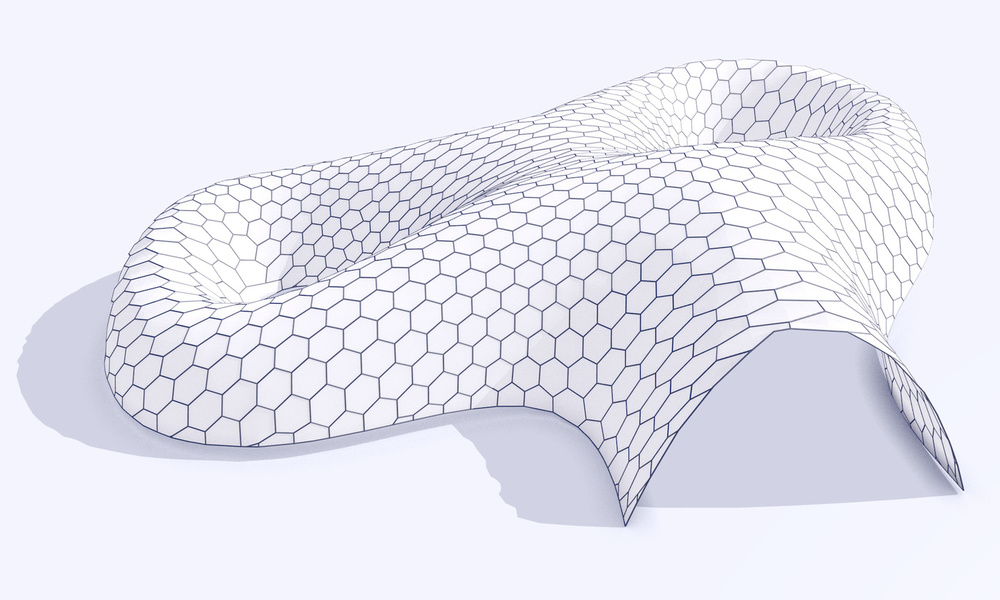

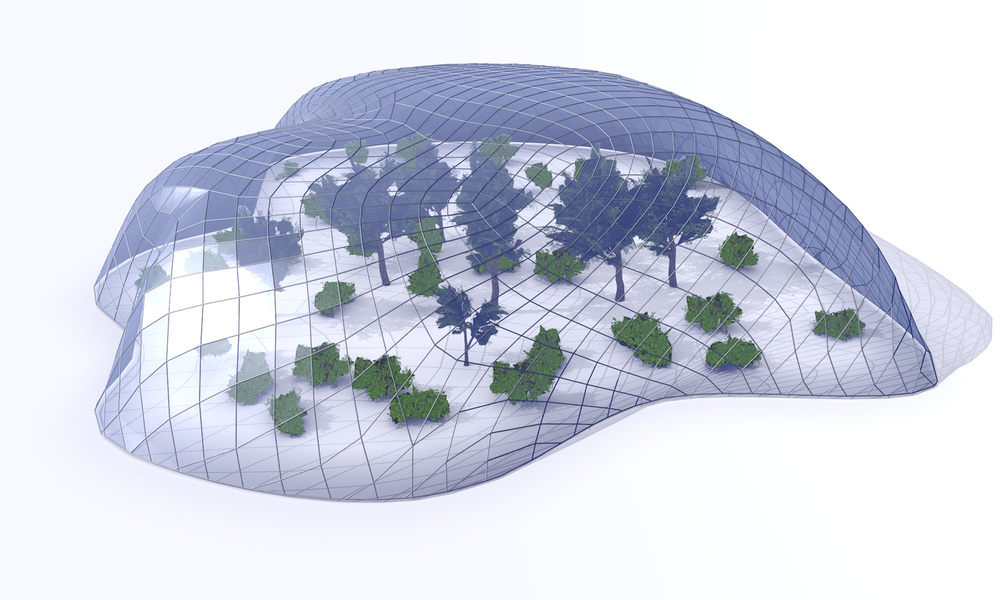
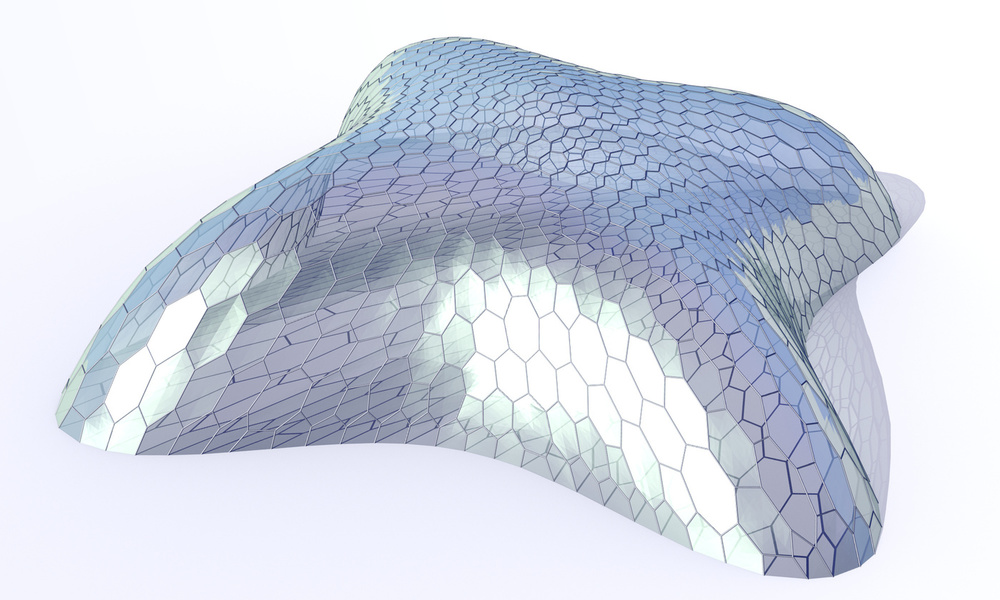
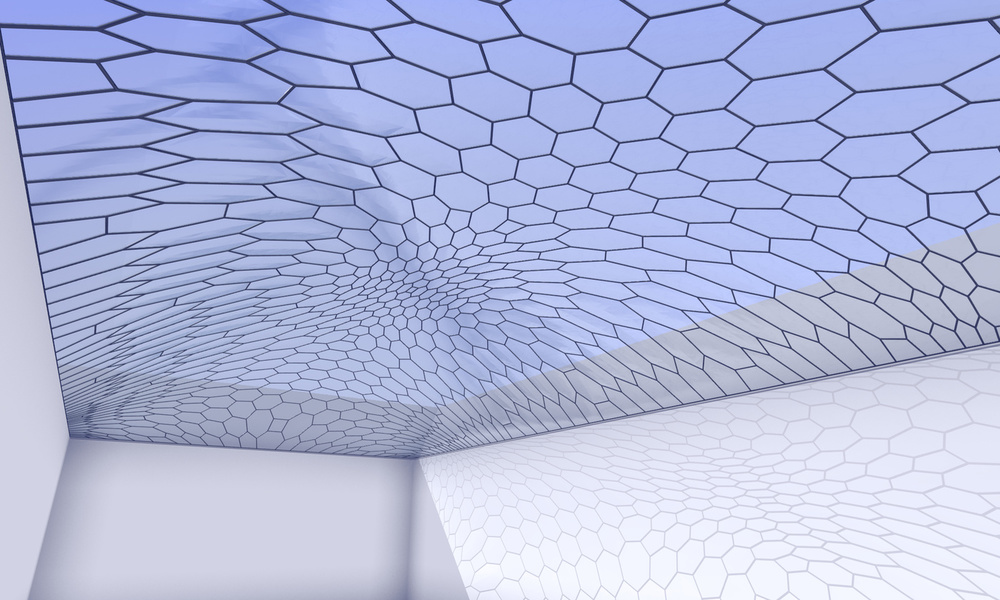
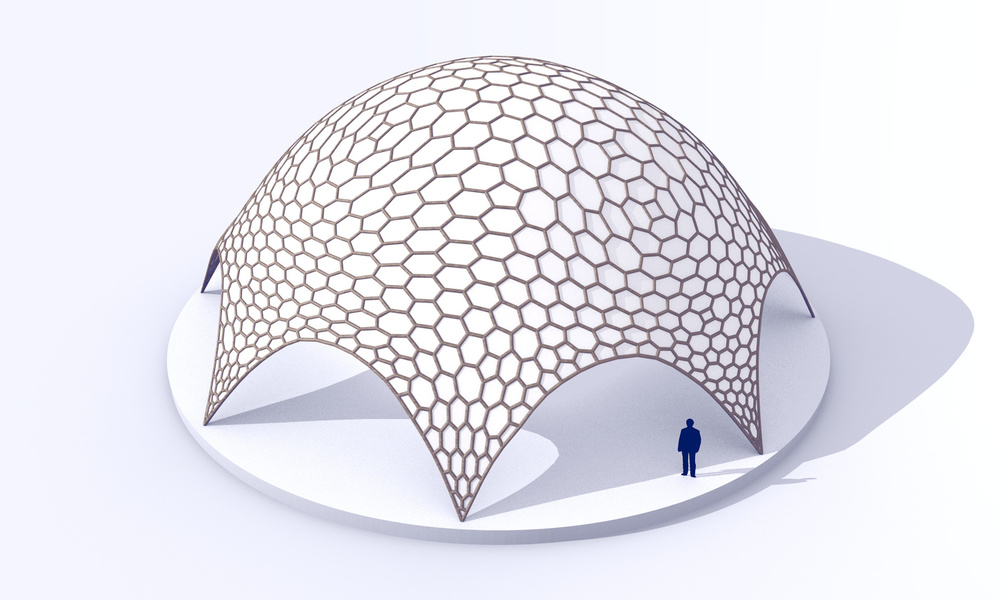






Polygonal architectural meshes with a stress-field-driven optimization
This research proposes a framework for designing grid shells with an optimized polygonal tessellation. In contrast to most of the methods in this field that provide for shape alterations while preserving the mesh topology, this method preserves the initial continuous shape as a given input by the designer and alters the tessellation to improve the statics of the structure.
Grid shells are discrete single-layer structures that are employed in the realization of complex free-form architectural surfaces. In grid shells, the load bearing function is played by a grid of mono-dimensional elements (such as beams, rods and cables), which are spatially arranged to form a shell, hence the name. These structures can be paneled with flat or curved facets, i.e. made of glass. The structural behavior of a grid shell is largely influenced by its underlying tessellation.
This work is inspired by lightweight and robust lattice structures that appear in nature. The basic idea is to concentrate more load-bearing material where the structure undergoes more stress and to orient the main elements on the principal stress directions of the underlying surface.
Starting from the stress analysis of the input surface, the tensor field is used to compute an anisotropic non-Euclidean metric, induced by a double orthogonal line field, a density field and an anisotropy field. Based on the relation between the stress tensor over a continuous shell and the optimal shape of polygons in a corresponding grid-shell, a polygonal anisotropic mesh is created. This mesh is further optimized taking into account symmetry and regularity of cells to improve aesthetics. Comparisons with other grid shell competitors, i.e. quad or tiangle based, demonstrates that Static Aware Voronoi Grid Shells achieve better static performances.



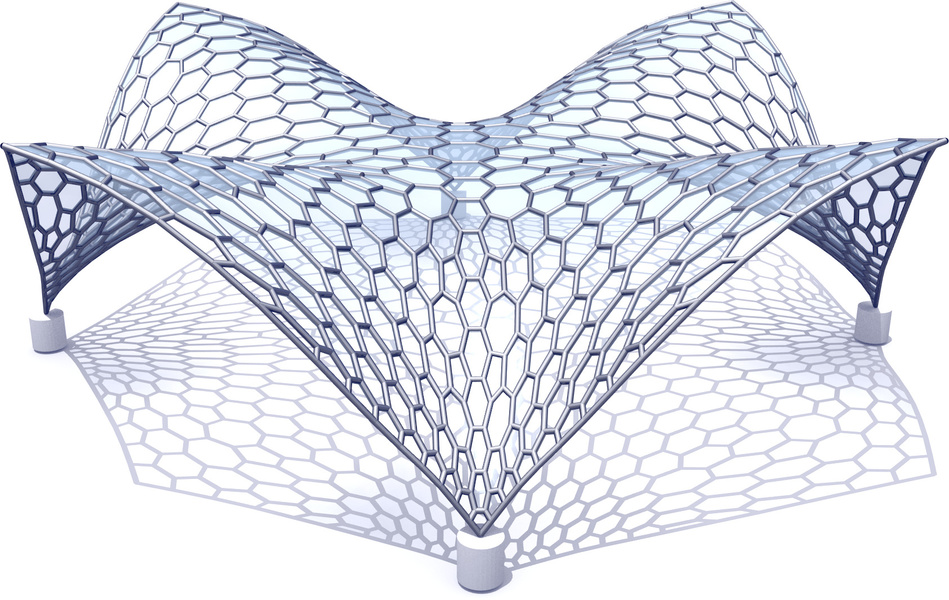
A reduced-scale model (2.40x2.40 m) has been realized as proof of concept. This shell structure is composed of 465 joints, 697 beams and 462 panels. Each of them is identified with a carved label. The joints are fabricated by means of an FDM printer; sticks of wood simulate the beams; laser-cut PET (Polyethylene terephthalate) panels simulate the transparent cladding. This structure has been experimentally tested by means of static investigations, which consist in affixing loads and measuring the accompanying deformations, and dynamic identification, with impulsive tests and operational modal analysis.
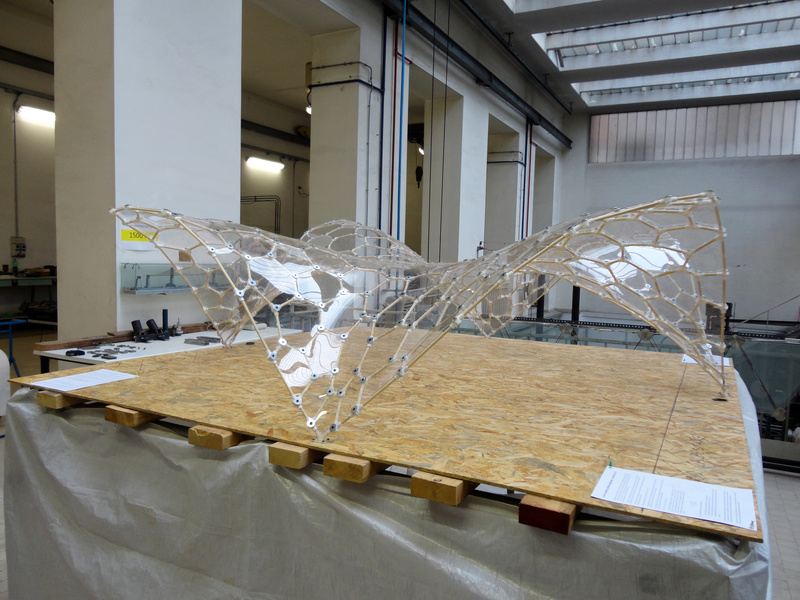

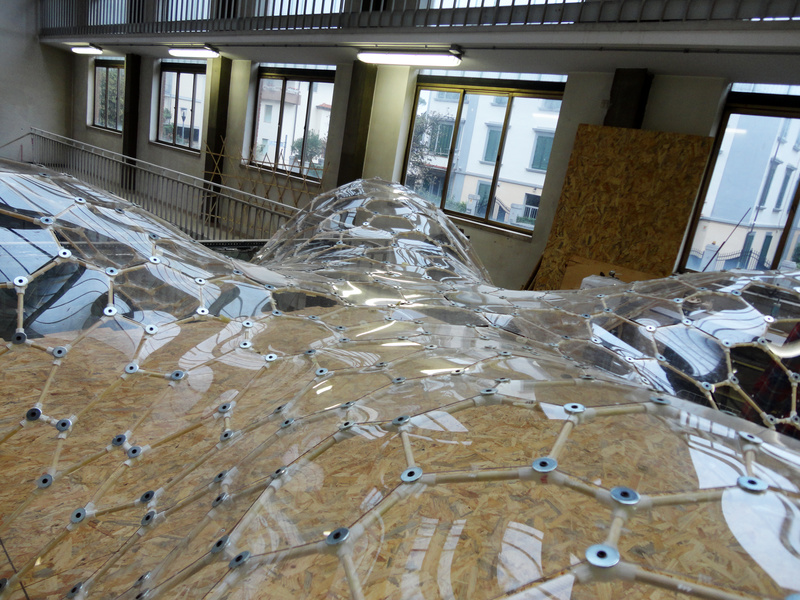
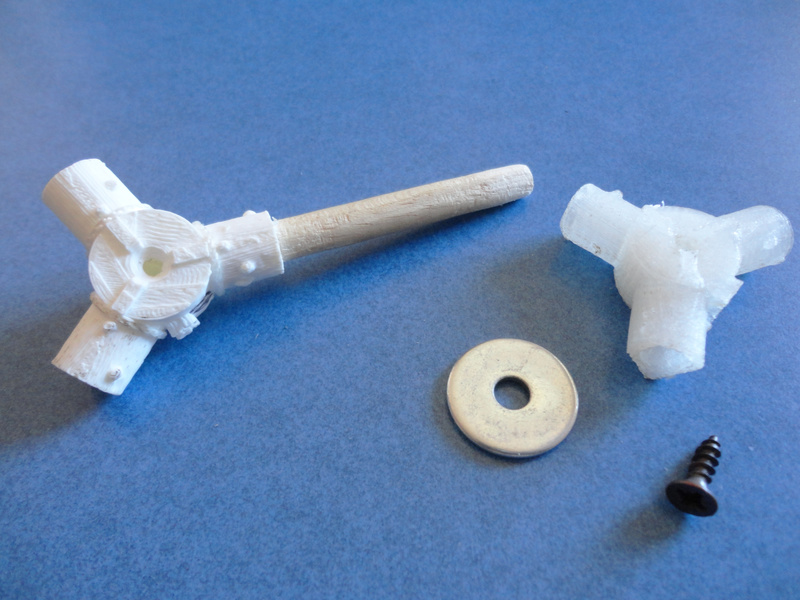
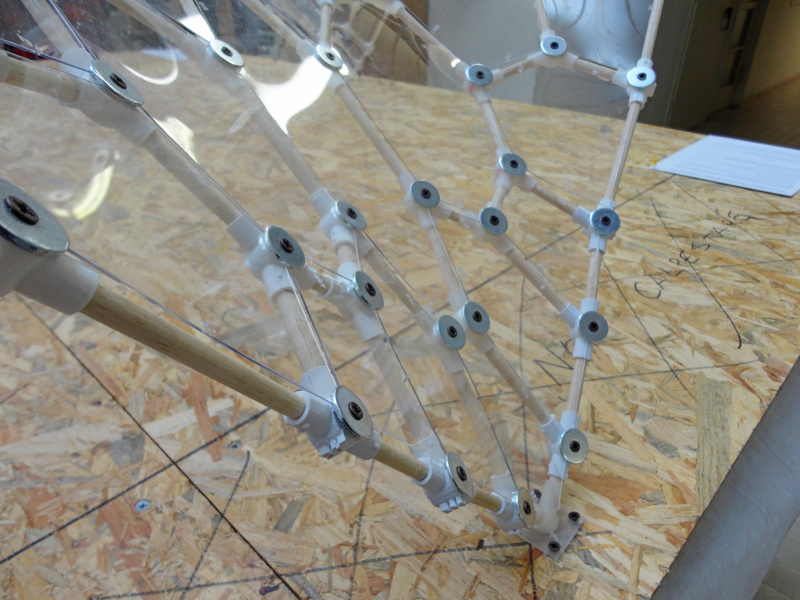
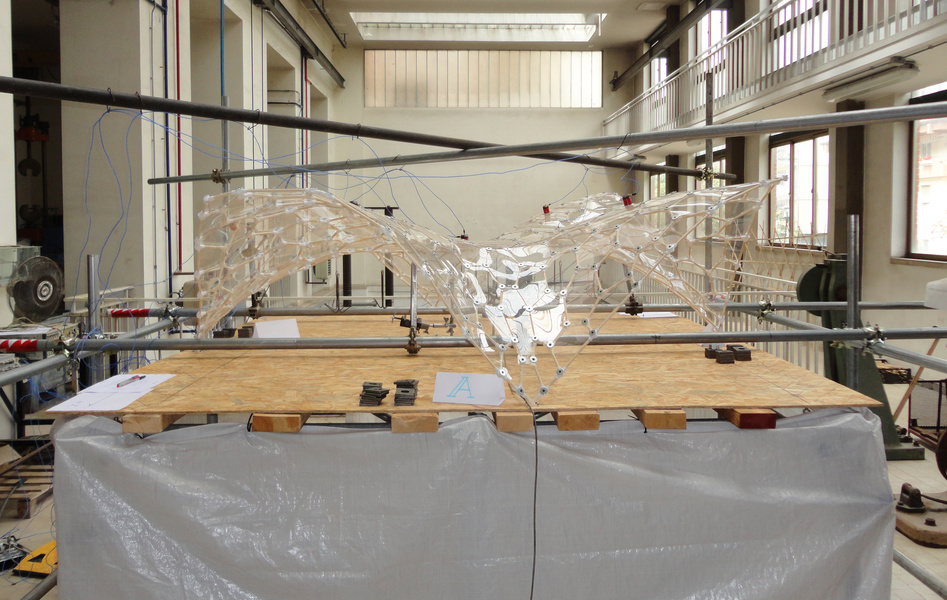
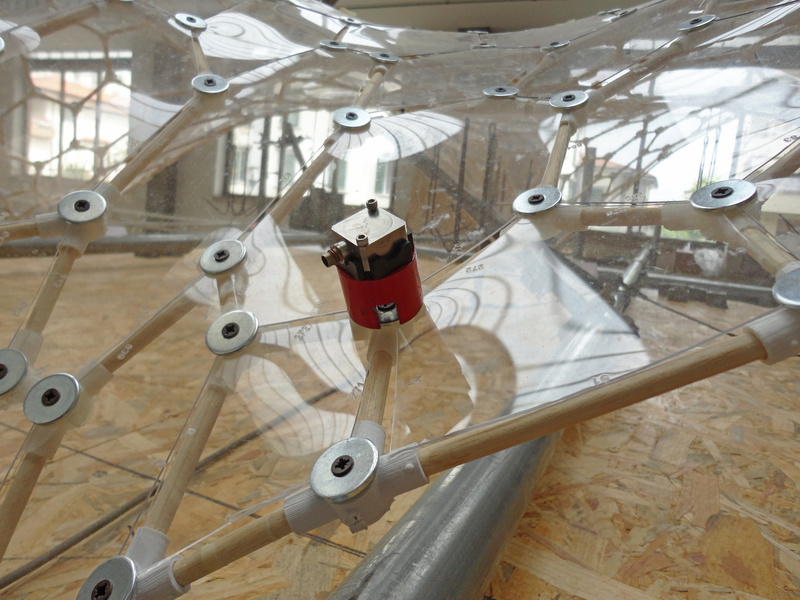
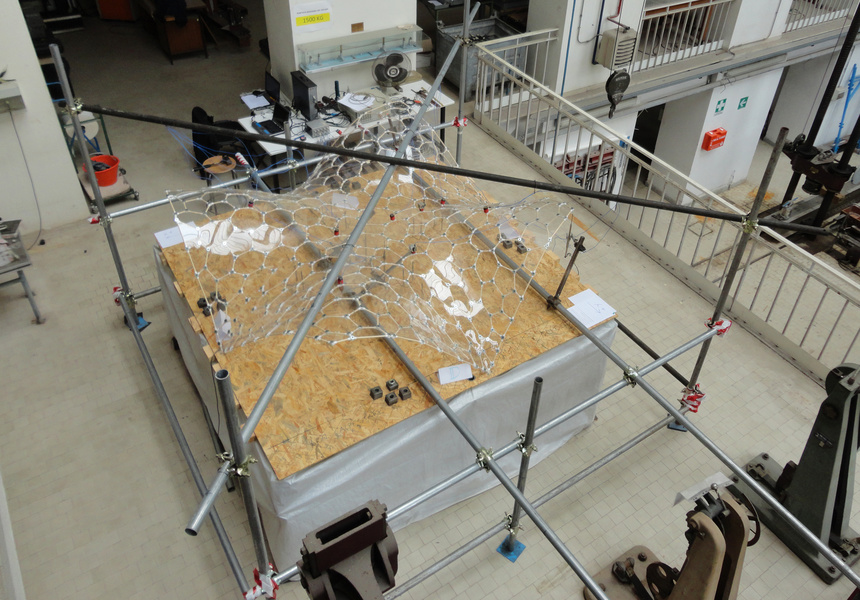
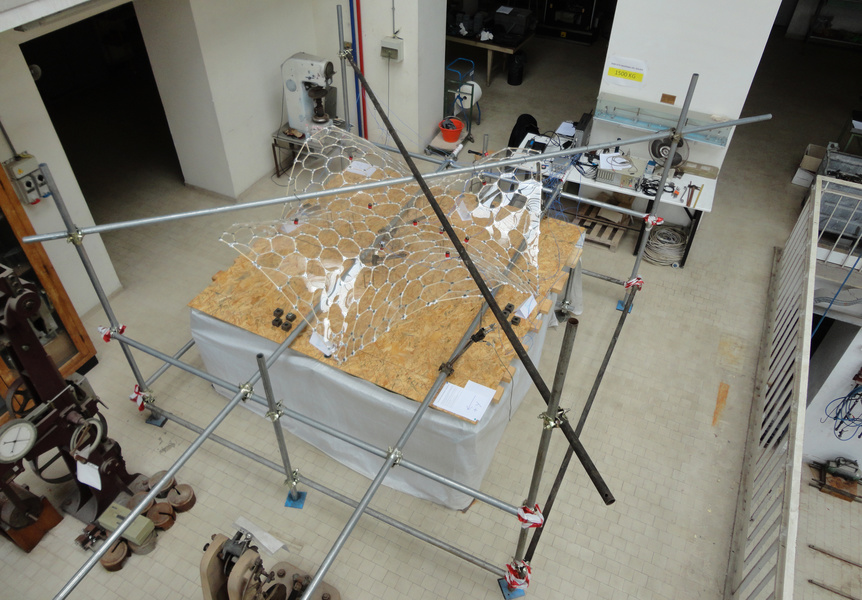
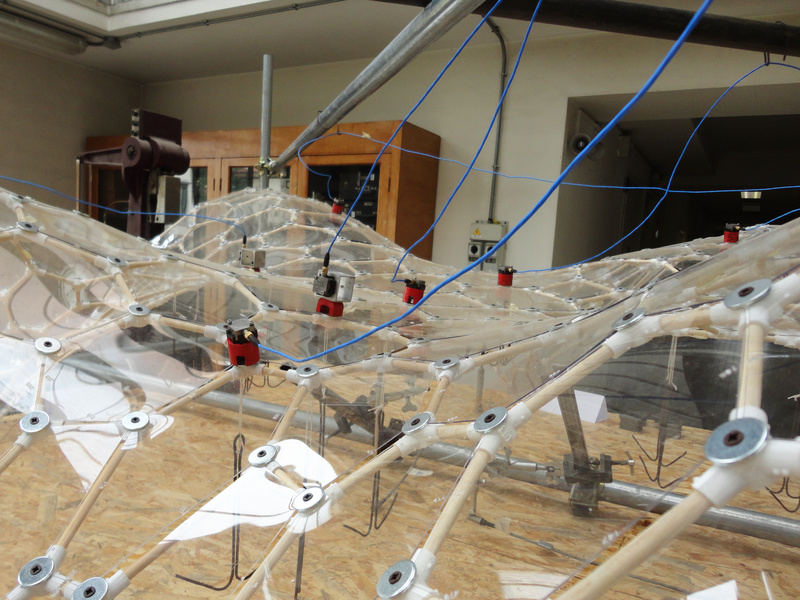
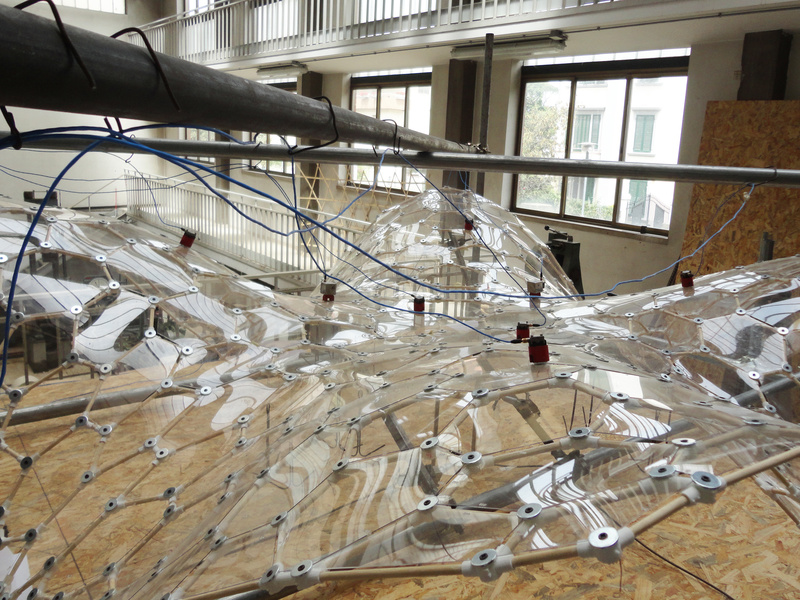
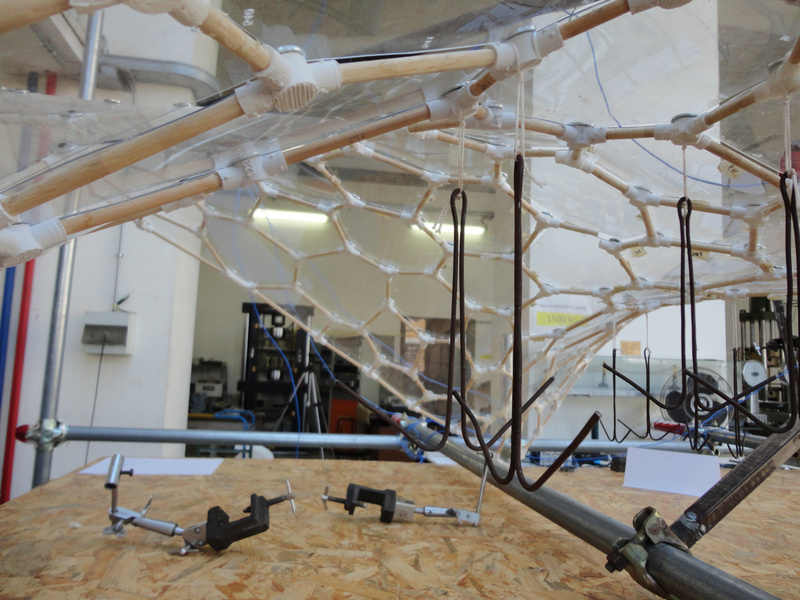
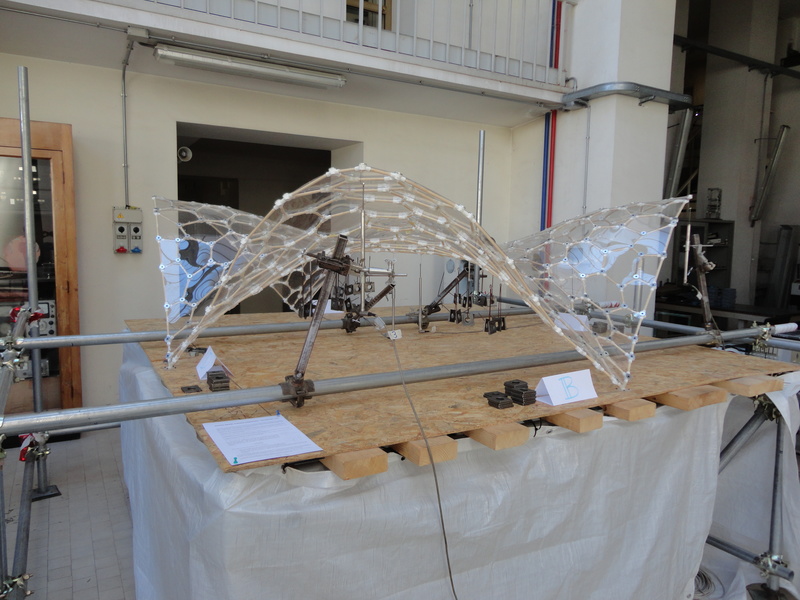
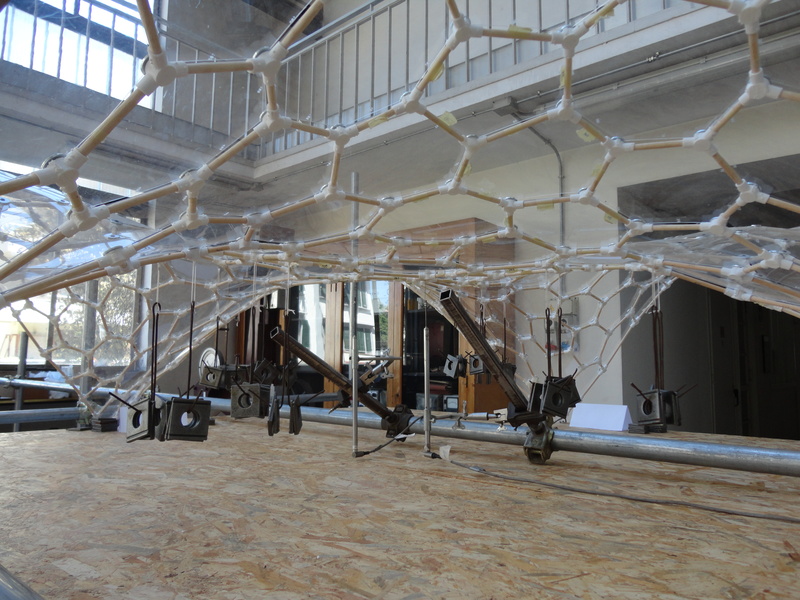
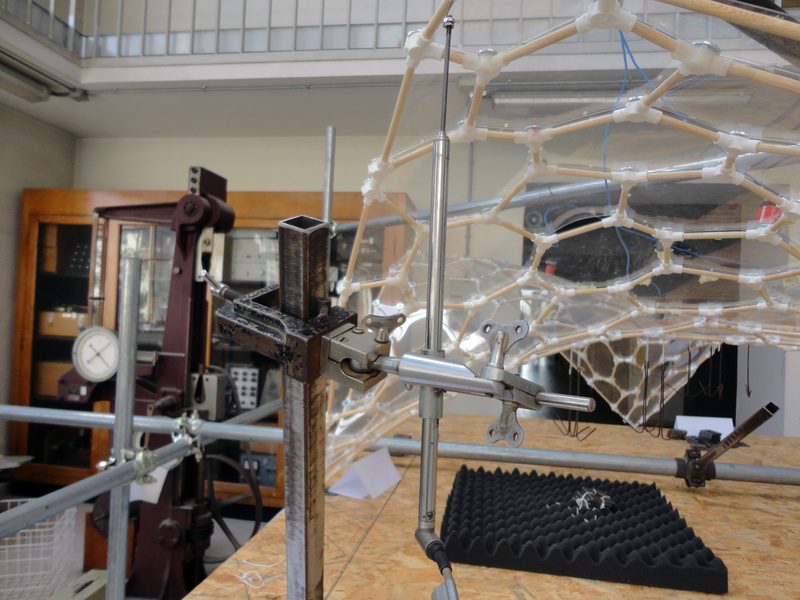
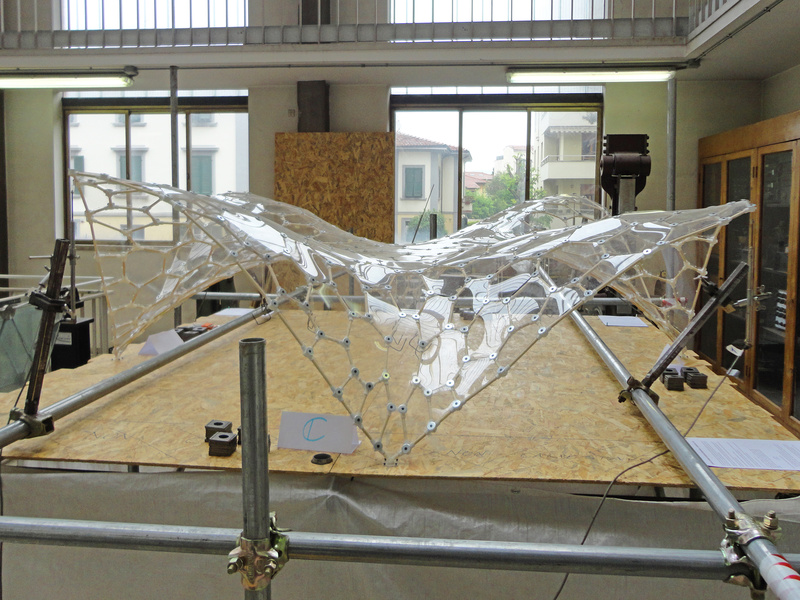
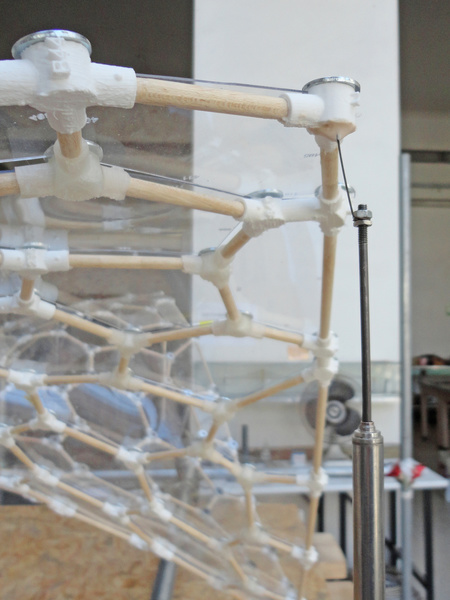
Paolo Cignoni paolo.cignoni@isti.cnr.it

Davide Tonelli

Nico Pietroni (UTS)
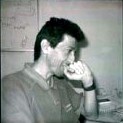
Paolo Cignoni

Roberto Scopigno

Gennaro Amendola

Enrico Puppo

Francesco Laccone

Maurizio Froli